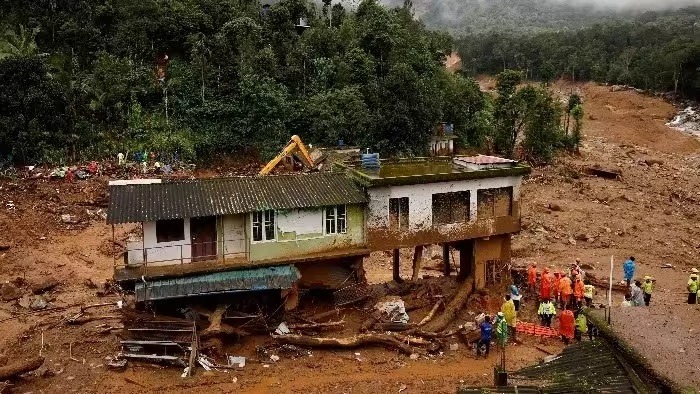
New Delhi: Heavy rains were responsible for the massive landslide that hit Kerala's ecologically sensitive Wayanad district two weeks ago, which has been made 10 per cent more intense due to climate change, says a recent study by 24 researchers from India, Sweden, the US and the UK.
According to the study, nearly two months of monsoon rains in Wayanad led to more than 140 mm of water falling in a single day on already extremely moist soil, causing the region to witness devastating floods and landslides that claimed the lives of at least 231 people.
Climate change became the cause of disaster: Report
Maja Wahlberg, climate risk advisor at the Red Cross Red Crescent Climate Center, said, "The rainfall that caused the landslide occurred in the area of Wayanad, which is considered to be the most landslide-prone in Kerala. As the climate is warming, the possibility of even more heavy rainfall is increasing. This fact underlines the urgency to strengthen preparations to deal with similar landslides in northern Kerala."
To assess the impact of anthropogenic climate change, a team of researchers from World Weather Attribution (WWA) analysed very high-resolution climate models to accurately predict rainfall levels over a relatively small study area.
The researchers said the models indicate a 10 per cent increase in rainfall intensity due to climate change.
Global warming is on the rise: report
He said that the models included in the study also estimate that if the global temperature rise remains two degrees Celsius more than the average temperature from 1850 to 1900, then the intensity of rainfall can increase by another four percent.
However, the researchers said there was a "high level of uncertainty" about the model results because the study area is small and mountainous with complex rainfall and climate patterns. They said a warmer atmosphere leads to higher humidity levels, which leads to heavier rainfall.
According to researchers, for every one degree Celsius increase in global temperature, the atmosphere's ability to trap moisture increases by about seven percent.
The average temperature of the Earth's surface is rising
The ever-increasing emissions of greenhouse gases such as carbon dioxide and methane have already caused the average global surface temperature of the Earth to rise by about 1.3 degrees Celsius. Scientists say this is the reason behind the increase in extreme weather events such as floods, droughts and heatwaves across the world.
While the relationship between forest cover, land use change and landslide risk in Wayanad is not fully clear from existing studies, factors such as quarrying for construction material and a 62 per cent reduction in forest cover have likely made the hills more vulnerable to landslides during heavy rains, the WWA researchers said.
Excessive rain also became the reason for landslides
Other researchers have also attributed the landslides in Wayanad to a combination of factors, such as deforestation, mining in vulnerable hills and prolonged rainfall with high humidity levels.
S Abhilash, director of the Centre for Advanced Atmospheric Radar Research at the Cochin University of Science and Technology (CUSAT), had told PTI that the warming of the Arabian Sea is leading to the formation of dense clouds, which is causing extremely heavy rainfall in a short period in Kerala and increasing the risk of landslides there.
10 districts of Kerala are vulnerable to landslides
According to the landslide atlas released last year by the Indian Space Research Organisation (ISRO) National Remote Sensing Centre, of the 30 landslide-prone districts in India, 10 are in Kerala, with Wayanad ranked 13th.
A study published in 'Springer' magazine in 2021 said that the landslide-prone areas in Kerala are located in the Western Ghats region, mainly in Idukki, Ernakulam, Kottayam, Wayanad, Kozhikode and Malappuram districts. It said that 59 per cent of the landslides in Kerala occurred in green areas.
A 2022 study on the declining forest cover in Wayanad showed that 62 per cent of the forests in the district disappeared between 1950 and 2018, while the green cover increased by nearly 1,800 per cent.
--Advertisement--

 Priya
Priya Share
Share



